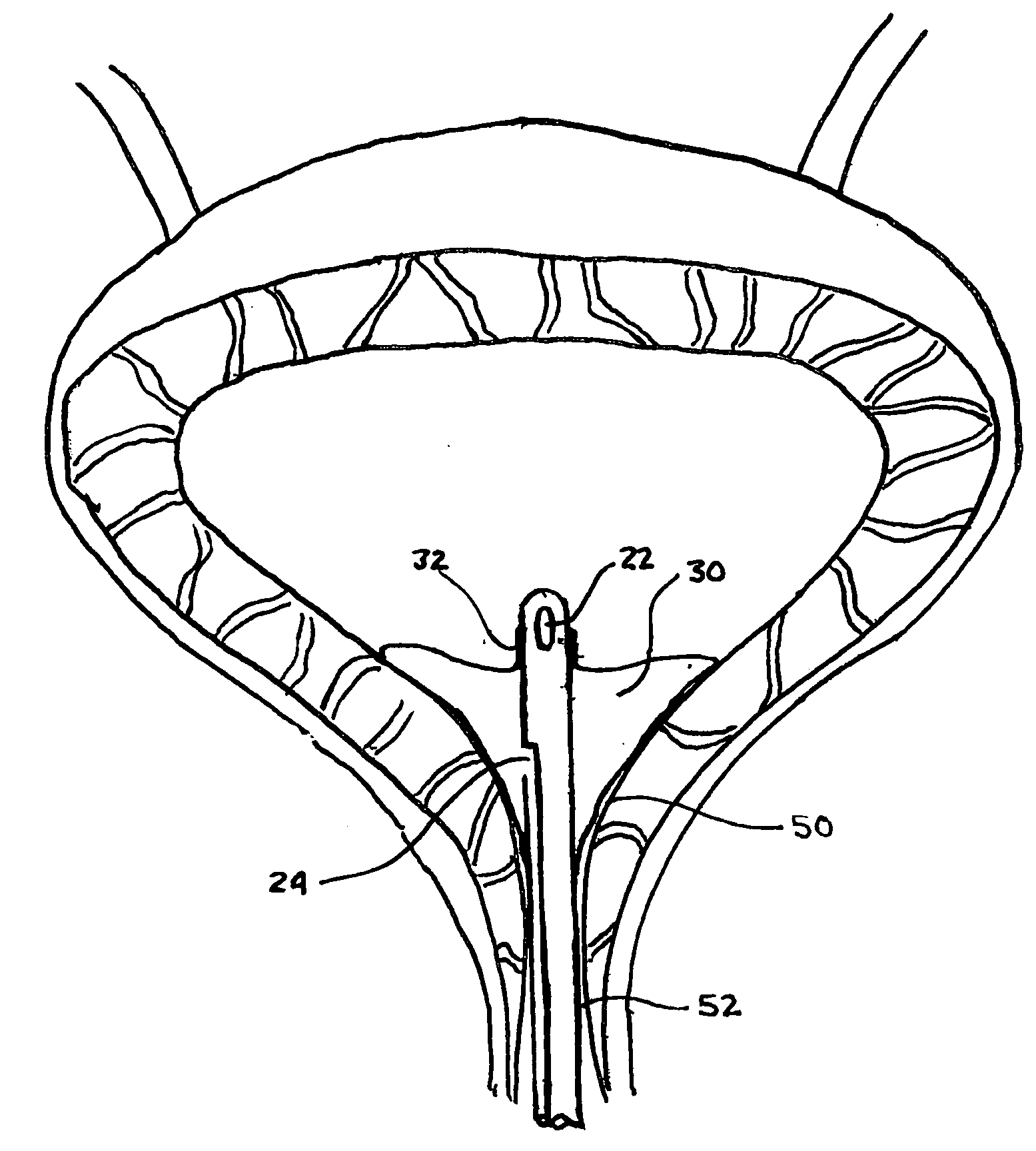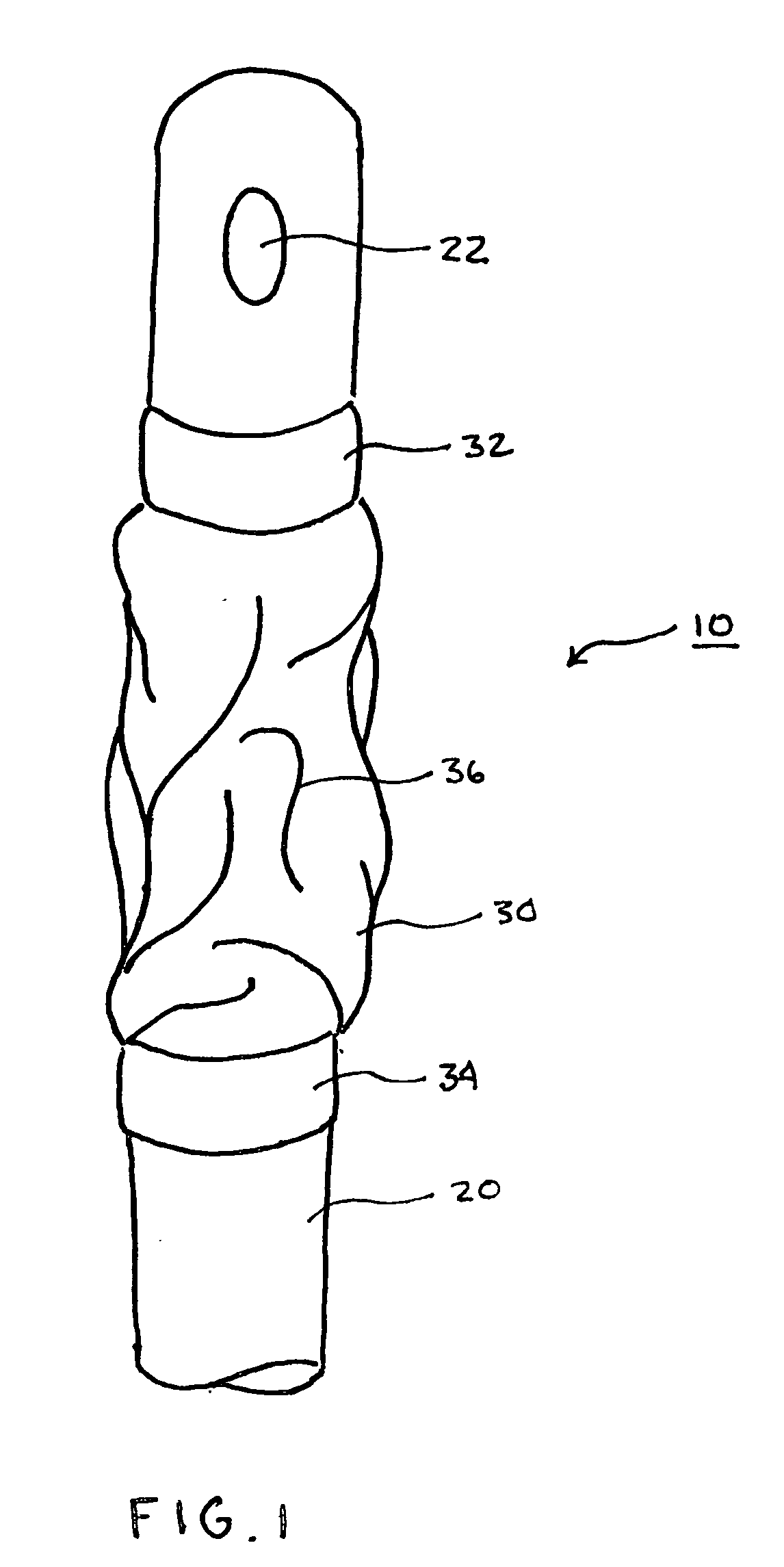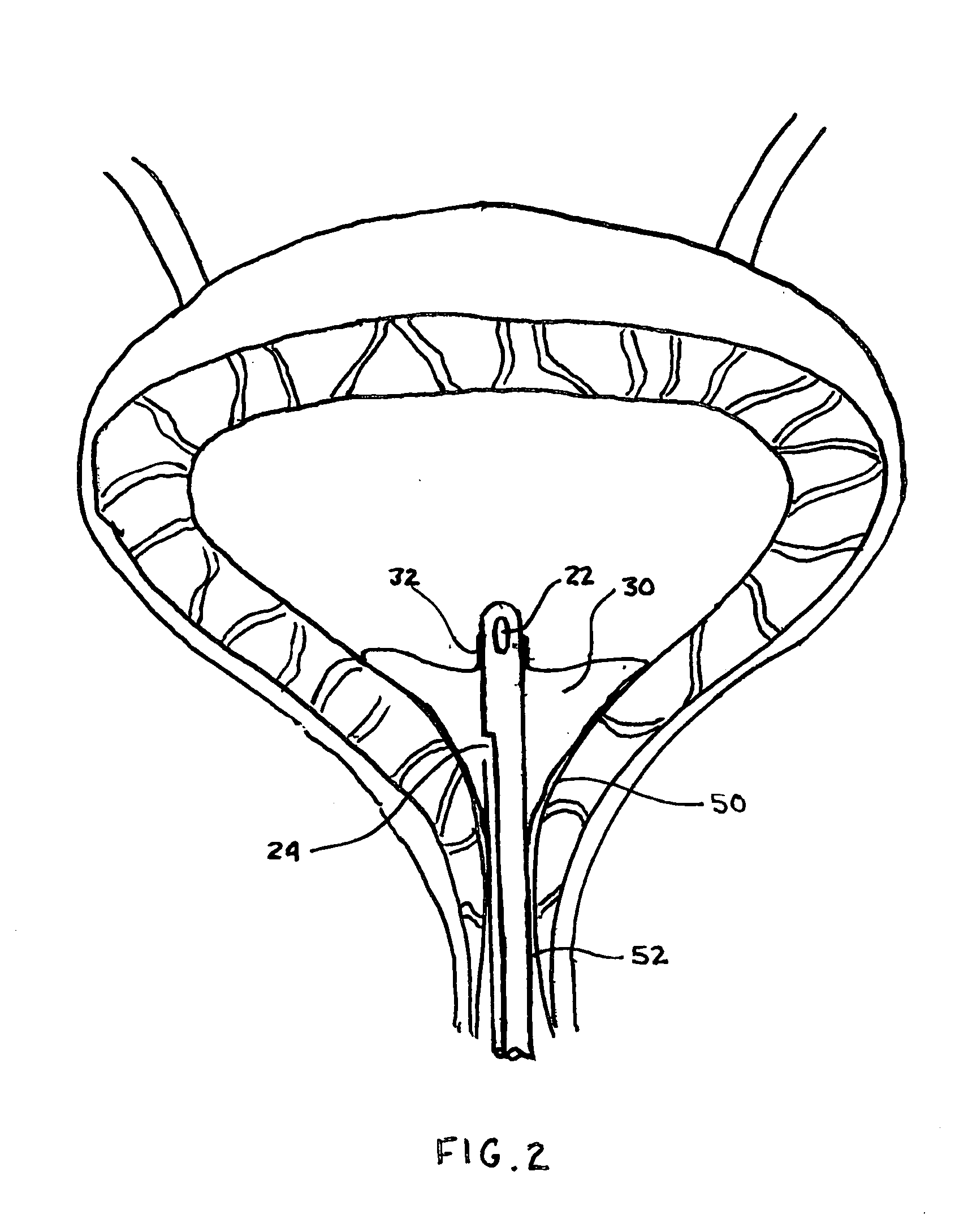Indwelling urinary catheter with enlarged sealing surface
a catheter and sealing surface technology, applied in the field of urinary catheters, can solve the problems of traumatic irritation in long-term catheterization, and achieve the effect of increasing the sealing effect of the balloon
- Summary
- Abstract
- Description
- Claims
- Application Information
AI Technical Summary
Benefits of technology
Problems solved by technology
Method used
Image
Examples
Embodiment Construction
[0022]In response to the foregoing challenges that have been experienced by those of skill in the art, the present invention is directed toward an improved indwelling urinary catheter that conforms more readily to the trigonum vesicae structure of the bladder thus better sealing the internal urethral orifice and reducing the incidence of ulceration of the bladder structures and infection of the same from transurethral migration of bacterium.
[0023]FIG. 1 shows the distal end of an indwelling urinary catheter 10 in a lateral illustrative view. The catheter 10 is provided with a shaft 20 and a balloon 30 affixed to the shaft 20. Proximal to the distal end of the shaft 20 is an orifice 22 which serves to drain urine or other fluids through the interior of the catheter 10. The balloon 30 is shown in a base-state, i.e. at rest and fully collapsed. Bands 32 and 34 are formed by the ends of the balloon 30 and serve as fluid tight bonds between the shaft 20 and the balloon 30. The bonding of...
PUM
 Login to View More
Login to View More Abstract
Description
Claims
Application Information
 Login to View More
Login to View More - R&D
- Intellectual Property
- Life Sciences
- Materials
- Tech Scout
- Unparalleled Data Quality
- Higher Quality Content
- 60% Fewer Hallucinations
Browse by: Latest US Patents, China's latest patents, Technical Efficacy Thesaurus, Application Domain, Technology Topic, Popular Technical Reports.
© 2025 PatSnap. All rights reserved.Legal|Privacy policy|Modern Slavery Act Transparency Statement|Sitemap|About US| Contact US: help@patsnap.com



